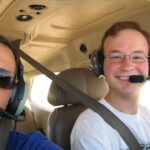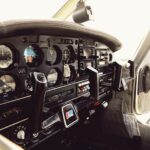
The Ultimate Guide to Becoming a Pilot: Understanding Costs and Steps
Embarking on a journey to become a pilot is thrilling, yet it involves careful planning and consideration. Whether you’re dreaming of the freedom of solo flight or aiming for the captain’s seat in a commercial airliner, understanding the financial and educational pathways is crucial. This guide will provide you with a clear flight plan to navigate the costs and steps involved in pilot training.
Key Takeaways
- Insight into the financial commitment required for pilot training.
- A step-by-step checklist to guide you through the pilot training process.
- How to select the right flight school that aligns with your aviation goals.
- A breakdown of different training programs and what they offer.
- Strategies for comparing costs and finding the best value in flight education.
Setting Your Altitude: A Checklist for Aspiring Pilots
- Research and compare flight schools.
- Understand the various pilot certificates and what each allows you to do.
- Assess the total costs, including hidden fees like gear and exam charges.
- Consider the time commitment and balance it with your current responsibilities.
- Explore financial aid, scholarships, and other funding options.
- Plan for medical exams and other prerequisites.
- Prepare for the written exams and practical flight tests.
By following this checklist, you’ll be well on your way to earning your wings. Remember, every pilot’s journey is unique, but the destination is always the same: the sky.
Exploring Your Flight Path: Researching Pilot Training
So, you’ve decided to become a pilot. The first step is to explore the landscape of pilot training. This means looking into different flight schools, understanding the types of pilot licenses, and knowing what each entails. It’s a bit like mapping your route before a big trip – it’s essential for a smooth journey.
Finding the Right Flight School
Choosing a flight school is like picking a college – it’s important to find the right fit for your goals and lifestyle. Consider factors such as location, the types of aircraft available, the experience of the instructors, and the school’s culture. It’s also wise to visit the school, talk to current students, and perhaps even take a discovery flight.
When you visit, pay attention to the details. Are the facilities well-maintained? Do the instructors seem knowledgeable and passionate about teaching? These observations will help you make an informed decision.
Training Programs Breakdown
Flight training programs vary widely, but they generally fall into two categories: Part 61 and Part 141. Part 61 programs offer more flexibility and may be ideal if you’re balancing training with other commitments. Part 141 programs are more structured and can be completed in a shorter time frame, which might be beneficial if you’re looking to start your flying career quickly.
Within these programs, you’ll encounter several key milestones:
- Private Pilot License (PPL) – Your first major step into the aviation world.
- Instrument Rating – Allows you to fly in a wider range of weather conditions.
- Commercial Pilot License (CPL) – Required if you plan to earn money as a pilot.
- Flight Instructor Certificates – Lets you teach others to fly, which can also help you build flight hours.
- ATP Certificate – The highest level of pilot certification.
Each of these certifications requires a different level of commitment, both in time and money, so understanding what each entails is crucial for planning your path.
Comparing Costs Across Schools
- Tuition fees – The core cost of the training program.
- Aircraft rental – Costs associated with renting the school’s aircraft for training.
- Instructor fees – Payment for the flight instructor’s time and expertise.
- Equipment and supplies – From headsets to navigation charts.
- Examination fees – For written, oral, and practical tests.
- Insurance – Some schools require students to carry their own insurance.
- Miscellaneous expenses – Such as fuel surcharges and airport fees.
While the sticker price of a program is important, be sure to account for all the associated costs. Some schools might offer an all-inclusive rate, while others may have many separate fees. A detailed comparison will ensure you find the best program for your budget.
Laying the Groundwork: Preliminary Requirements
Before you soar into the skies, there’s groundwork to be done. This includes meeting educational prerequisites and ensuring you meet medical and legal standards. These initial steps are non-negotiable and form the foundation of your pilot training journey.
Educational Background
While a college degree isn’t a strict requirement for becoming a pilot, having a solid educational background is beneficial. High school math and physics can be particularly helpful, as they are relevant to flight training. If you’re eyeing a career with major airlines, know that many prefer or require a bachelor’s degree. It doesn’t have to be aviation-related, but it shows commitment and capability to learn complex subjects.
Medical and Legal Necessities
Before you can take to the skies, you’ll need to pass a medical exam to obtain an FAA medical certificate. This ensures you’re fit to fly and can handle the physical and mental demands of piloting. Also, you’ll need to have the right to live and work in the country where you’re training, and for many, this means securing the appropriate visas or other legal documentation.
It’s crucial to address these requirements early on, as any hiccups here can delay or derail your training plans. Be proactive and schedule your medical exam as soon as possible, and ensure all your paperwork is in order.
Takeoff: Starting Your Pilot Training Journey
With the preliminaries out of the way, it’s time to start the actual training. This is where the adventure really begins, and you’ll start to learn the skills and knowledge necessary to become a competent pilot.
Obtaining a Student Pilot Certificate
To fly solo, you’ll need a Student Pilot Certificate. This involves a straightforward application process through the FAA’s Integrated Airman Certification and Rating Application (IACRA) system. While it’s not required to begin training, you’ll need it before you can fly solo, so it’s best to take care of this early on.
Ground School Essentials
Ground school is where you’ll learn the theory behind the art of flying. Topics include aerodynamics, navigation, weather, regulations, and more. You can choose between attending in-person classes or completing an online course. Either way, ground school is essential for passing the FAA written exams and becoming a safe and knowledgeable pilot.
Investing in Flight Hours
Flight hours are the currency of pilot training. You’ll need a certain number of hours to qualify for each type of pilot certificate. This includes both dual instruction time, where you fly with an instructor, and solo flight time, where you pilot the aircraft on your own. Logging these hours is a significant part of your investment in becoming a pilot, both in time and money.
Each flight is an opportunity to hone your skills, so make the most of it. Ask questions, practice maneuvers, and learn from every takeoff, flight, and landing. Remember, quality trumps quantity – aim for well-executed flight hours that truly build your competence.
Navigating Costs: Financing Your Dream
Let’s talk numbers. Financing your pilot training is a major part of the journey, and it’s important to have a clear picture of the costs involved. From the initial private pilot certificate to the coveted airline transport pilot certificate, each step has its own price tag. But don’t let the costs deter you – with smart planning and knowledge of financial resources, your dream of flying is well within reach.
Understanding Total Costs from Zero to Hero
Starting with zero flying experience, the path to becoming a pilot involves several stages, each with associated costs. A private pilot license can range from $8,000 to $15,000, while a commercial pilot license might set you back an additional $20,000 to $30,000. If you aim to become an airline pilot, expect the total cost to soar to $70,000 or more, factoring in specialized training and multi-engine time.
- Private Pilot License: $8,000 – $15,000
- Instrument Rating: $8,000 – $10,000
- Commercial Pilot License: $20,000 – $30,000
- Multi-Engine Rating: $5,000 – $10,000
- Certified Flight Instructor Certificates: $5,000 – $8,000
- Airline Transport Pilot Certificate: $5,000 – $10,000
Remember, these figures are estimates and can vary widely based on location, flight school, and the frequency of your training flights. It’s essential to get quotes from several schools and build a detailed budget.
Scholarship and Financial Aid Opportunities
Thankfully, there are numerous scholarships and financial aid options available to help offset the costs of pilot training. Organizations like the Aircraft Owners and Pilots Association (AOPA), Women in Aviation International, and various aviation foundations offer scholarships to aspiring pilots. Additionally, some flight schools provide financing plans or work-study programs.
- Research scholarships specific to aviation.
- Explore financial aid options through your chosen flight school.
- Consider personal loans or lines of credit if necessary.
- Look into veteran’s benefits if you have served in the military.
Securing financial aid can take time and effort, but it’s worth it. Start your search early, and don’t hesitate to apply for as many opportunities as you qualify for – every little bit helps!
Budgeting Tips for Aspiring Pilots
Creating a budget is a crucial step in managing the costs of pilot training. Start by listing all potential expenses, including the hidden costs like checkride fees and gear. Then, look at your income and savings to determine how much you can afford to spend monthly. Here are some tips to help you stay on track:
- Set clear financial goals for each stage of your training.
- Track all your expenses, no matter how small they seem.
- Save money by studying independently for the written exams.
- Consider buying used gear or sharing resources with fellow students.
- Keep an emergency fund for unexpected costs.
Remember, the cost of training is an investment in your future. By sticking to your budget, you can make your pilot dreams a reality without breaking the bank.
Ascending Through the Ranks: Earning Your Wings
As you progress through your training, you’ll move up the ranks from student pilot to certified aviator. Each new certificate and rating builds on the previous one, expanding your skills, knowledge, and flying privileges. It’s a step-by-step process that requires dedication and hard work, but the rewards are sky-high.
From Private Pilot to Commercial Aviator
Your first major milestone will be the Private Pilot License (PPL), which allows you to fly single-engine aircraft and carry passengers. However, if you’re aiming for a career in aviation, the Commercial Pilot License (CPL) is your next target. This license is necessary to get paid for flying and opens the door to a variety of flying jobs.
- Log at least 250 total flight hours for the CPL, including specific requirements.
- Master complex maneuvers and navigation techniques.
- Pass the commercial pilot knowledge and practical exams.
Earning your CPL is a significant achievement and marks the transition from flying for fun to flying for a living. It’s a challenging yet exciting phase of your training that brings you one step closer to your dream job.
Advanced Flight Training and Certifications
Once you have your CPL, you might choose to specialize further. This could mean getting an instrument rating, which allows you to fly in a wider range of weather conditions, or a multi-engine rating, which is essential for flying larger aircraft. For those looking to reach the pinnacle of pilot certifications, the Airline Transport Pilot (ATP) certificate is the ultimate goal.
- Instrument Rating: Hone your skills for flying in less-than-perfect visibility.
- Multi-Engine Rating: Learn to handle the complexity of flying with more than one engine.
- ATP Certificate: The highest level of pilot certification, requiring 1,500 flight hours.
Each of these advanced certifications opens new doors and opportunities in the aviation industry. Whether you dream of flying cargo across the globe or piloting jumbo jets, these additional qualifications are key to a successful career in the skies.
Landing Your Career: Post-Certification Steps
After the rigorous training and exams, you’re finally certified. But the journey doesn’t end there. Now, it’s time to navigate the job market and take practical steps to launch your career in aviation. This phase is about building experience, making connections, and stepping into the cockpit as a professional pilot.
Job Market Overview for Pilots
The aviation industry is dynamic, with demand for pilots ebbing and flowing due to economic cycles, retirements, and industry growth. However, long-term prospects remain strong, particularly due to a global pilot shortage. Opportunities range from regional airlines to cargo carriers, corporate aviation to flight instruction.
- Regional airlines often serve as a stepping stone to major carriers.
- Cargo pilots enjoy stable careers with unique flying schedules.
- Corporate aviation offers a chance to fly different aircraft and routes.
- Becoming a flight instructor can help you build hours while teaching others.
Understanding the landscape is key. Network, attend job fairs, and stay informed on industry trends to find the right opportunity for you.
Building Flying Hours
Building flying hours is crucial for advancing your pilot career. Most major airlines require a significant number of flight hours, so finding ways to accumulate them is essential. Teaching others to fly, banner towing, pipeline patrol, and flying for smaller regional airlines are common ways to build experience.
- Instructing student pilots can be a rewarding way to gain hours.
- Consider aerial survey jobs, which often require pilots to fly for long durations.
- Part-time corporate or charter flying can also contribute to your logbook.
- Volunteer for pilot organizations or missions to gain diverse flying experiences.
Every hour logged is a step closer to your dream job. Be proactive and seek out varied flying opportunities to broaden your skill set.
Transitioning into a Professional Pilot Role
Moving from training to a professional pilot role involves more than just flying skills. It’s about understanding the responsibilities and lifestyle of a pilot. Time management, communication, and ongoing learning are all part of the job. You’ll also need to adapt to irregular schedules and spend time away from home.
- Stay up-to-date with continuous education and certifications.
- Develop strong decision-making and problem-solving skills.
- Learn to manage the stress and fatigue that can come with the job.
- Build a support network within the industry for advice and mentorship.
Transitioning into a professional role is an exciting time. Embrace the challenges and opportunities that come with being a pilot.
Frequently Asked Questions (FAQ)
Is a College Degree Required to Become a Pilot?
No, a college degree is not a requirement to become a pilot. However, many airlines prefer or require a bachelor’s degree for employment. It’s also worth noting that a degree can provide a competitive edge in the job market and may be beneficial for career advancement.
- A degree can demonstrate your ability to commit to and complete a rigorous program.
- Having a degree may offer more career flexibility and security within the industry.
- Some flight schools offer degree programs in conjunction with flight training.
While not mandatory, a college degree is a valuable asset in your pilot career toolkit.
How Long Does It Take to Become a Pilot?
The time it takes to become a pilot can vary based on the type of pilot you want to be and your training schedule. Obtaining a Private Pilot License (PPL) can take a few months to a year, while a Commercial Pilot License (CPL) might take one to two years. Becoming an airline pilot with an Airline Transport Pilot (ATP) certificate can take several years due to the required flight hours.
- Private Pilot License: Typically 3-12 months.
- Commercial Pilot License: Usually 1-2 years.
- Airline Transport Pilot: Often 5-7 years, including building required flight hours.
Your dedication, finances, and whether you train full-time or part-time will influence the timeline. With commitment and focus, you can achieve your pilot licenses in a reasonable timeframe.
Can I Work While Training to Be a Pilot?
Many aspiring pilots wonder if they can maintain a job while undergoing flight training. The answer is yes, but it requires careful time management. Part-time training programs are designed to accommodate students who need to work. However, it’s important to consider the demands of both your job and your training schedule to ensure you can commit fully to both.
- Choose a flight school with flexible scheduling options.
- Communicate with your employer about your training commitments.
- Consider part-time or freelance work to allow for more study and flight time.
- Look for jobs within the aviation industry that can complement your training.
Working while training can be challenging, but with the right balance, it’s certainly possible. It can even be beneficial, as it allows you to fund your training while gaining valuable experience.
What Are the Medical Requirements for Pilots?
Before you can take the controls, you’ll need to meet the FAA’s medical requirements. A medical certificate confirms that you’re healthy enough to perform the duties of a pilot. There are three classes of medical certificates, each with its own standards and duration.
- First-Class Medical Certificate: Required for airline transport pilots.
- Second-Class Medical Certificate: Necessary for commercial pilots.
- Third-Class Medical Certificate: Sufficient for student, recreational, and private pilots.
Medical exams cover a range of health aspects, including vision, hearing, cardiovascular health, and mental health. It’s essential to maintain your health and fitness throughout your career to ensure you meet these requirements.
Are There Options for Pilots Beyond Airlines?
The sky’s the limit when it comes to a pilot’s career. While airlines are a prominent employer, numerous other opportunities exist. Corporate aviation, cargo flights, agricultural aviation, and aerial surveying are just a few of the paths a pilot can explore. Additionally, pilots can specialize in flight instruction, emergency medical services, or work for government agencies.
- Corporate pilots fly business professionals to meetings around the world.
- Cargo pilots transport goods, often on unique schedules with substantial flight time.
- Agricultural pilots play a crucial role in crop production and pest control.
- Flight instructors train the next generation of pilots, sharing their expertise and passion.
Each of these roles offers different challenges and rewards, making aviation a field with diverse career options.
In conclusion, becoming a pilot is an ambitious goal that requires a significant investment of time, effort, and resources. From understanding the costs and steps involved in pilot training to navigating the job market, this guide has provided you with the knowledge to set your course. Remember, the journey to becoming a pilot is as rewarding as the destination itself. With determination and the right preparation, you can turn your dream of flight into a soaring reality.
Fly high, stay focused, and never stop reaching for the skies!






Leave a Reply